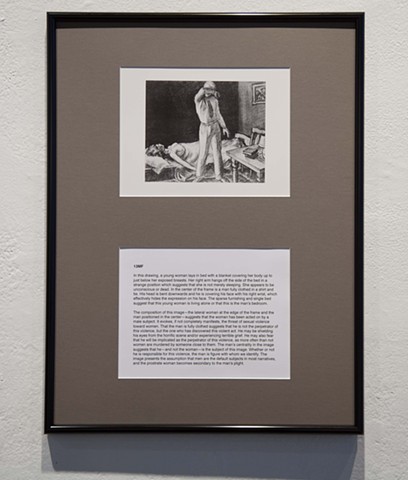Critting the Thematic Apperception Test
In this drawing, a young woman lays in bed with a blanket covering her body up to just below her exposed breasts. Her right arm hangs off the side of the bed in a strange position which suggests that she is not merely sleeping. She appears to be unconscious or dead. In the center of the frame is a man fully clothed in a shirt and tie. His head is bent downwards and he is covering his face with his right wrist, which effectively hides the expression on his face. The sparse furnishing and single bed suggest that this young woman is living alone or that this is the man’s bedroom.
The composition of this image—the lateral woman at the edge of the frame and the man positioned in the center—suggests that the woman has been acted on by a male subject. It evokes, if not completely manifests, the threat of sexual violence toward women. That the man is fully clothed suggests that he is not the perpetrator of this violence, but the one who has discovered this violent act. He may be shielding his eyes from the horrific scene and/or experiencing terrible grief. He may also fear that he will be implicated as the perpetrator of this violence, as more often than not women are murdered by someone close to them. The man’s centrality in the image suggests that he—and not the woman—is the subject of this image. Whether or not he is responsible for this violence, the man is figure with whom we identify. The image presents the assumption that men are the default subjects in most narratives, and the prostrate woman becomes secondary to the man’s plight.
